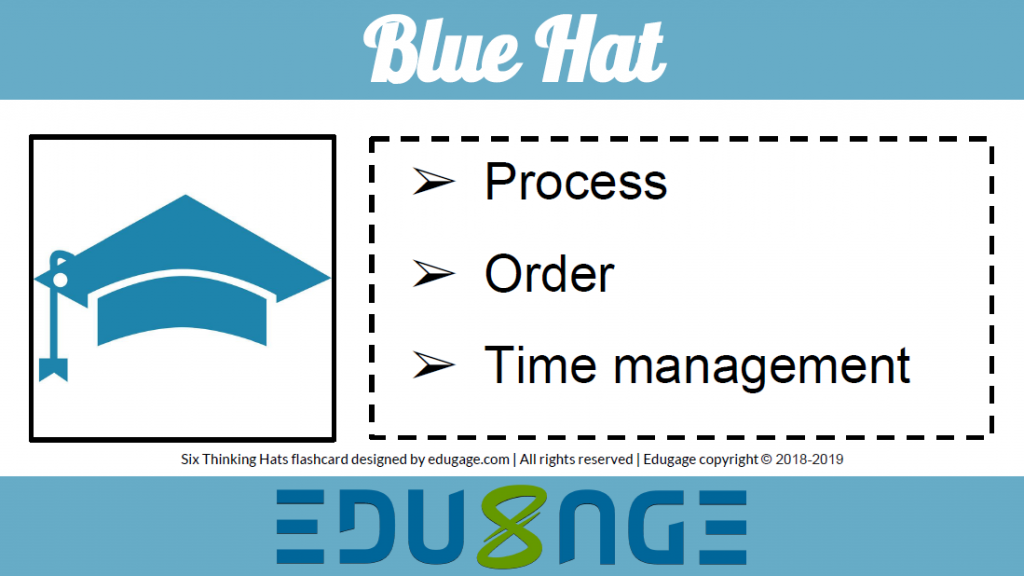You might have heard about the six thinking hats as a useful thinking tool. And you might ask how to bring it into the classroom as a learning tool for students? We will explain below how this thinking tool can be applied in the classroom.
How to use six thinking hats in the classroom? Leverage six thinking hats as a classroom tool for optimal student engagement. Assign unique hat roles in group activities to foster diverse viewpoints, active participation, and the exploration of differing opinions, ensuring comprehensive student involvement.

Having a good knowledge of the six thinking hats idea will be the key to implement it well in your classroom. Below, we will talk more about the six thinking hats, its benefits, and our step-by-step advice to use six thinking hats in a group activity.
What is six thinking hats?

Six thinking hats is a mental model developed by Edward De Bono. It is used to help explore different perspectives.
Each thinking hat represents a unique thinking perspective. This helps an individual to explore different viewpoints relating to a problem if they were to think from all six hats.
| Thinking Hats (Color) | Perspective |
|---|---|
| Blue | Process |
| White | Facts |
| Green | New Ideas |
| Yellow | Benefits |
| Red | Feelings |
| Black | Problems |
It is useful to use all the thinking hats for decision-making, group-thinking, and problem-solving. This makes thinking thorough with all possible perspectives being covered.
Benefits of six thinking hats in group activity

As educators you are very busy with teaching and administrative responsibilities. Spending your precious time to understand and implement six thinking hats in your classroom must make beneficial sense. Here we will highlight the benefits of using six thinking hats for group activity.
Benefits of Six Thinking Hats for group activity:
- Develop critical thinking
- Develop innovative thinking
- Preparation of fruitful discussion
- Ensure each student participate
- Expose different types of thinking
- Fun to role-play
Develop critical thinking
Combining the blue, white, yellow and black thinking hats together can help students develop critical thinking. These thinking hats provide a systematic approach to lay out a situation.
Students will be guided logically when analyzing a situation. This builds a great foundation for students’ critical thinking skill.
Develop innovative thinking
Combining the green and red thinking hats together can help students develop innovative thinking. Further, together these two hats can nurture students’ creativity.
Here is how it can work well together: The green hat tries to come up with new ideas. While the red hat uses intuition. Together, an intuition can make new ideas practicable and unique. This cultivates innovative thinking.
Preparation of fruitful discussion
With the six thinking hats tool, a group discussion will unlikely end up at one perspective.
This singular perspective can commonly happen in group discussion. This is a result when group members have similar dominant type of thinking. This prevents different perspective from surfacing in discussion.
Thus, using the six thinking hats can set up a group discussion to be more productive.
Ensure each student participate
Assigning each student with a thinking hat in a group will ensure their participation in the activity. This will avoid the common issue, where students do not participate in group activity. For example, some students in a group might choose not to contribute, while a few students in the group might dominate the discussion.
With a systematic approach that focuses on expressing each thinking hat, all the students in the group will be ensured at least a speaking opportunity. This will ensure participation of all students within the group.
Expose different types of thinking
The greatest benefit of the thinking hats is its use to bring about different types of thinking.
Commonly, we all have a tendency towards a type of thinking or perspective, which we prefer. However, it might not be a beneficial learning experience for students to be confined in their own preference of thinking.
Exposing students to different types of thinking can broaden their thinking capability. This can lead to beneficial learning outcomes in their study.
With this exposure, they will become better at analyzing problems from different perspective to find solutions.
Fun to role-play
Role-playing is a teaching tool that makes classes fun and enjoyable. Through the in-build role-play nature of the six thinking hats, students will have a fun time, and will be more engaged.
Step-by-step advice on using six thinking hats in group activity

With an understanding of the six thinking hats, you are now ready to plan and implement it in group activity.
Step-by-step instruction for using six thinking hats in a group activity:
- Decide on the topic or problem for the group activity
- Form groups of 6 students
- Clearly explain each thinking hat role to the class
- Instruction on the sequence of thinking hat
- Monitor and facilitate the group activity progress
1. Decide on the topic or problem for the group activity
Choosing the right topic or problem for the group activity will make full use of the six thinking hats. This allow your students to reap the most benefit from the six thinking hats.
When deciding on the topic or problem, you should choose something that can be discussed about, whereby there is no one right answer to the problem. It should be an open-ended topic or problem. This will be ideal for using the six thinking hats to explore different perspectives.
In contrast, you should avoid topics or problems with clearly defined answer, such as solving simple mathematical questions. These type of questions relies on logical thinking, and not all thinking hats can be involved in solving it. Thus, they are not ideal to use as group activity with six thinking hats.
2. Form groups of 6 students
There are six thinking hats, so you will need to form groups of 6 students. If there are not enough students to form a group, you can have a smaller group whereby some students will have to use 2 or more thinking hats.
3. Clearly explain each thinking hat role to the class
Before the start of the group activity, you must be sure that your students understand the role-play with the six thinking hats. You will have to explain each thinking hat role to your class.
Then allow your students to decide which of the six thinking hats they like to be in their own group.
To further help you with the group activity, we have made flashcard for each thinking hat. You can download it below, print one set of six thinking hats flashcard for each group.

The flashcard can be an ongoing guide for your students to refer to the thinking hat they have chosen.
4. Instruction on the sequence of thinking hat
Tell your students to follow the sequence of thinking hats from Blue > White > Green > Yellow > Red > Black. This systematic sequence helps to open up the group discussion in a optimal way.
5. Monitor and facilitate the group activity progress
Lastly, as your group activity is underway, remember to monitor how your students are involved in the group activity. If there are groups of students that are stuck, and not in a discussion, do help and facilitate the group discussion. Try to facilitate just enough to get the students moving ahead with their discussion.
There will also be some students that have difficulty understanding the six thinking hats. You will have to explain in greater detail for them to understand. A common difficulty is when a student finds it hard to relate the thinking hat perspective to the topic. You should prepare in advance some hints and prompts to help them out.
Alternative use of six thinking hats between groups
Step-by-step instruction for using six thinking hats between groups:
- Decide on the topic or problem for the group activity
- Form up to 6 groups
- Assign each group a different thinking hat
- Clearly explain each thinking hat role to the class
- Give adequate time for students to discuss within their group
- Instruction on the sequence of thinking hat presentation
- Monitor and facilitate each group’s presentation to the class
- Optional: Repeat the group activity with each group being assigned a new thinking hat
- Compare and contrast the discussion that arise from the group activity
Related Questions
Can six thinking hats be used for reading comprehension? Yes, six thinking hats can be used to improve students’ reading comprehension. It acts as a framework for students to analyze an article or novel from different perspectives. This helps students to comprehend their reading in a wholesome way.
